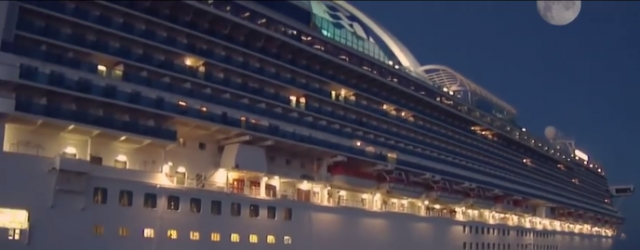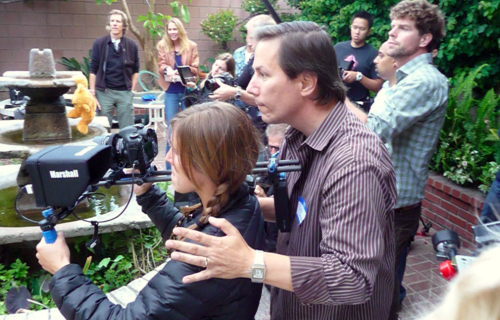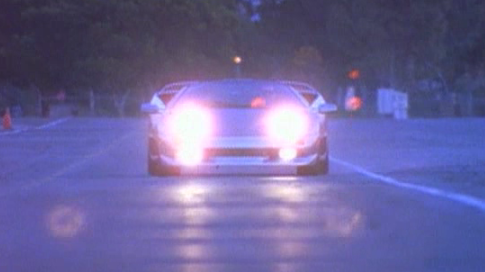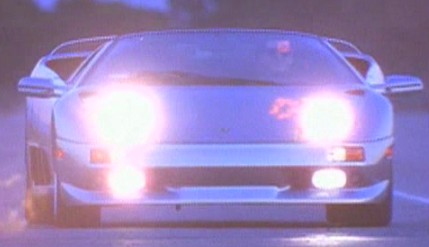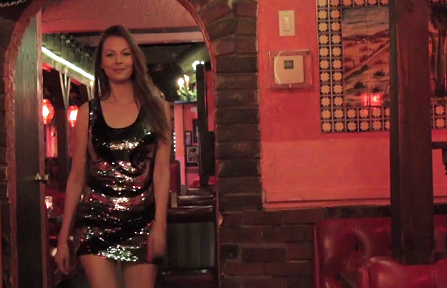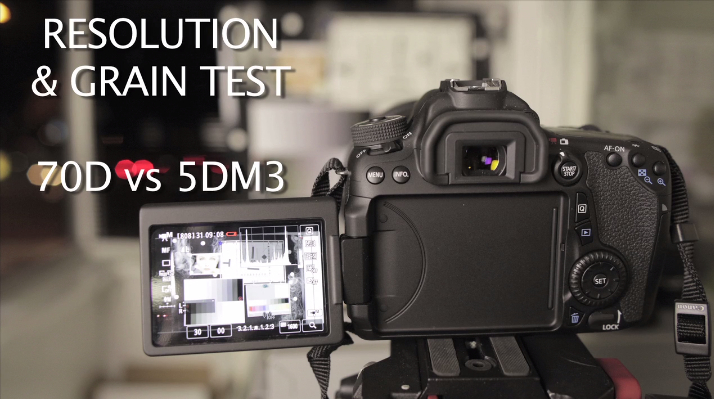(Make sure to get video from Jeff Bauer)Over the past few years, the Canon EOS 5D Mark II has been a run-away hit with independent filmmakers. It was one of the first DSLRs to offer 1080p High Definition video, allowing it to compete alongside more expensive, traditional camcorders.Now, four years later, the new Canon EOS 5D Mark III has arrived and thankfully it hosts some upgrades to the video mode. With the more powerful DIGIC 5+ processor, moiré is reduced and the rolling shutter problems minimized. On the software side, encoding is more advanced, giving you options to record in a new, higher quality ‘All-i’ compression.
- Moiré: When shooting a video that contains areas of repetitive detail , if it exceeds the resolution of the camera it will create a wavy moiré pattern or haze like artifacts.
- Rolling Shutter: When shooting video on a DSLR, different portions of the frame are exposed at different times in relation to the than other portions. When the subject or the camera moves during exposure, the result is reflected in the frame as either skew, wobble, or partial exposure. This distorts your image and hurts the quality.
The 5D Mark III’s 35mm full frame sensor allows for shallow depth of field and relatively sharp picture quality. You also have full manual control over the way your video looks, controlling shutter speed, ISO, and more.
- ISO: The measure of a digital camera sensor’s sensitivity to light. This effects the amount of noise and grain present in your video.
To determine the amount of noise present in each ISO setting, we created a series of tests on 5D Mark III’s sensitivity. For those of you who haven’t seen the results watch the video above.1. First Impressions: After reviewing the footage for the first time, we had a near impossible time seeing any noise below 20000 ISO.2. Results: Once we bumped up our levels and zoomed in 200%, we started to see that there is was at least some grain present in each ISO setting.3. Conclusions: Native ISO numbers faired the best with 160, 320, 640, and 1250 showing the least amount of noise. Not that the other settings are bad, but I recommend avoiding them. ISO up to 6400 is usable but again stick with the native ISO numbers.More Canon 5D Mark II ISO video tests are coming soon, this time showing the noise levels with the Noise Reduction feature turned on (Normal & High).Stay tuned for more video previews here at CanonBootCamp.com
–
Best,
Click this button to Connect
Trevor Eisenman
Social Media Strategist
The Association
818.841.9660 Office
626.975.6726 Cell
Canon 5D II Versus Canon 7D
Whatever you want to say. I don't know enough to suggest what to write.
Possible Keywords:
compare 5d and 7d
5D II vs 7D (this one has the most searches)
Touched by a Princess…thrice
The first time I was first touched by a princess, like many young kids, was by one of Walt Disney’s animated features.
The second time I was touched by a princess was much later when we started filming for Princess Cruises, our company’s first client. I heard how the Brits pronounce the word, “prin-CESS”, in the most regal way and I found myself wanting to bow slightly. It’s very human to yearn for moments where we rise above the humdrum life for a brief taste of the best of life – the life enjoyed by royalty.
The closest I came to royalty was filming the J. Paul Getty documentary. Mr. Getty, at that time the richest American private citizen, had chosen Sutton Place for his home. Sutton Place is the Tudor mansion built in 1525 in Surrey by Sir Richard Weston, courtier to Henry VIII. 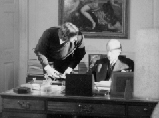 Nice digs. Obviously, Mr. Getty, our gracious host, had access to the finest things of life. But Mr. Getty told us happiness had eluded him. He told us he’d give all his wealth for one successful marriage. With that my definition of “the best” changed. “The best” of life is being in love and loving those in our lives.
Nice digs. Obviously, Mr. Getty, our gracious host, had access to the finest things of life. But Mr. Getty told us happiness had eluded him. He told us he’d give all his wealth for one successful marriage. With that my definition of “the best” changed. “The best” of life is being in love and loving those in our lives.
(Fletch with J. Paul Getty)
In February of this year, I was touched a third time. This time by Princess Cruises, again. Princess is redefining “the best” cruise in a way that parallels Mr. Getty’s view of what really is “the best” in life. Princess’ “come back new” campaign defines “the best” cruise as the one that brings the rich satisfaction of reconnecting with loved ones…exploring exotic places…connecting to rich historical textures…embracing cultures…in short, living life in love with our significant other, our families, and with the peoples and places Princess visits.
The “come back new” campaign is beautifully produced by Goodby Silverstein & Partners, Princess Cruises’ ad agency, capturing moments of reconnection on a Princess cruise. Ms. Jan Swartz, the new President of Princess Cruises, redefines cruising in the video below.
Steering the marketing launch is Mr. Gordon Ho, Senior Vice President of Marketing for Princess, formerly with Disney. His marketing course is based on survey data that a growing segment of cruise passengers want a transformative experience – “to enrich their lives, explore and visit new places, experience culture, and use vacations to reconnect with family.”
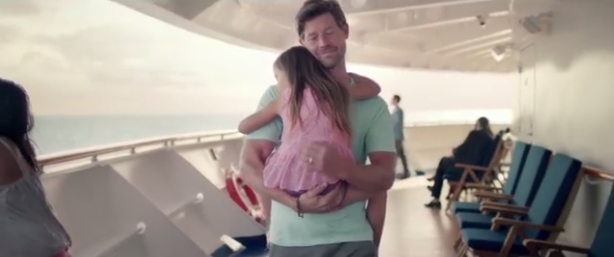
We applaud Princess for such a bold departure from their earlier branding, “escape completely”. The “come back new” campaign focuses not on escape but coming home to the core values that really matter to all of us in the family of man.
WIth this campaign Princess elevates its tier of caring service, already considered by most to be excellent. My wife and I cruised on the Diamond Princess last to Alaska. As always, the Princess crew took that extra step to make us feel well cared for.
With this new re-branding Princess returns to its core values that she had when we first started filming on the “Love Boat” as it was then known. More importantly, Princess expands her role to not only help one fall in love again with one’s significant other, but to fall in love with the world and the wonderful people and places Princess visits.
A touching corporate mission, in our view. Bon Voyage, Princess. Bon Voyage, Ms. Swartz. Bon Voyage, Mr. Ho.
____________________________________________________
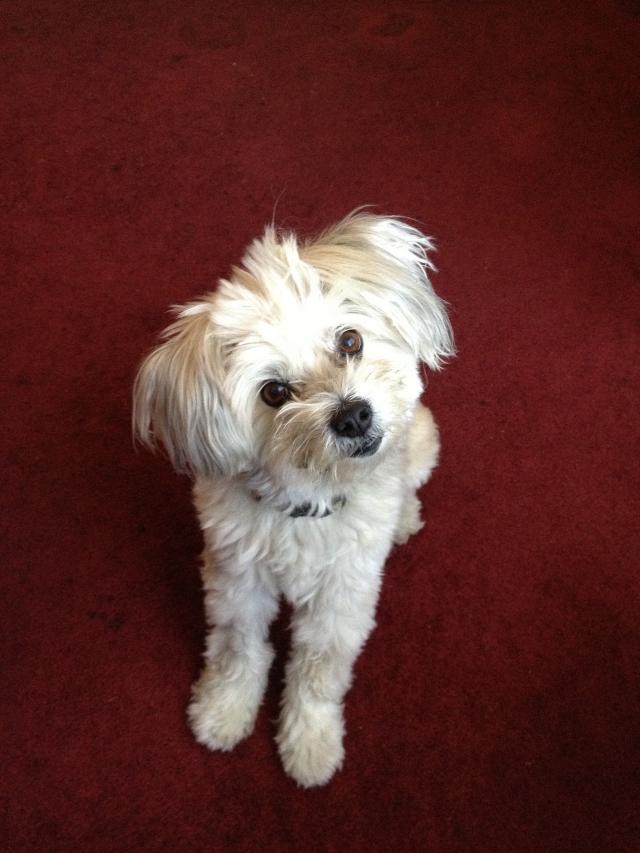 This blog was approved by Sadie Murray, Editor in Chief, on condition that “reconnecting with one’s dog” be added to the agenda of a “best life”.
This blog was approved by Sadie Murray, Editor in Chief, on condition that “reconnecting with one’s dog” be added to the agenda of a “best life”.
- See more at: http://blog.theassociation.tv/#sthash.pO8ZJd6I.dpuf
Custom Video Production
There’s a huge difference between a video and a video that works.
A video that works actually helps the marketing and sales effort. Many videos fall far short of helping. Mos ha
A good video engages the viewer by showing pictures they find appealing. This can be a picture about something they like, and/or a picture shot in a way to be aesthetically pleasing.
The test of a good video is: "Does it hold your interest if you turn the sound off?" If your video doesn’t, you’ve got some work to do.
Where do ideas wait to be thought?*
Have you ever wondered where ideas wait to be thought?
I mean, you sit there with your mind running. It's like a phonograph needle
(except we don't have those anymore, so let¹s call it a laser beam on a CD
or a DVD) playing thoughts for you to think. It never seems to run out,
this stream of thoughts.
So it's this uninterrupted stream of "Jan was nice to Herb. My cat looked
fat. Shoes don't match. Isn't Maui too expensive for Christmas…and rainy?
Must lose weight. Kevin was sweet. What's on sale? These pens are empty.
Going to be eighty today. Was Martha Stewart really THAT guilty to go to
prison? That prick cut me off………………………"
A lot of thoughts are triggered by what we see. We call these ³outside²
thoughts. Other times we¹re deep in ³inside² thoughts. We don't even see
what we see. We're just "playing thoughts" completely disconnected from
"reality".
Well, I pose my question again. Where is this stream of thoughts
warehoused? There's never a gap between them. It's like some vast US Mail
warehouse with a conveyor belt of mail coming through – each one to be
inspected and "thought" instantly, one after another, and on and on until
eternity. Some are logged to be sent back to the warehouse so they can be
thought again. Others only get sent to the "thought once and only once" bin.
There never seems to be a let up, unless we're looking at the ocean and
hearing the roar of the breaking surf…inhaling and exhaling…like the
calming of our mother's breathing. Or looking out over the Grand Canyon.
By the way, I don't have the answer to this question. It is a complete
bafflement to me. It's just like the other bafflement. How can I remember
a thirty second moment on the coast of Kauai, and suddenly I can smell the
smells again, feel the sand between my toes and feel the salty air on my
skin and the warm breeze wafting my shirt? Or looking out across a fertile
prairie in Spring where the wheat is a soft green, so wispy they blur
together as the breeze undulates their feathery plumes.
I think we¹re just phonographs looking for something to play (or laser
pickup heads if you insist on being modern). We play content from outside
sources, or our own oldies, or new stuff we¹ve whipped together. We¹re just
walking jukeboxes (they don¹t make those anymore either).
And this is why I like going to the ocean. I just watch the swelling of the
waves, the pelicans, who are once the most awkward looking but efficiently
designed fish eating machines. But there¹s nothing to think about. Even
when I¹m not thinking, I am thinking, ³Why aren¹t I thinking about
something?²
And thank goodness, this Aristotle session is sometimes interrupted by a
seagull that¹d like my sandwich while I ponder the meaning of life, which my
son, Thomas, told me when he was eight.
The meaning of life is something to do.
Alright then. Let¹s get thinking! Maybe we should get some ice cream.
©2012 Fletcher Murray
Canon DSLR One Day Crash Course
Maybe list some of the testimonials from surveys and a brief profile on one of the grads.
Focus tips for Canon HDSLR users
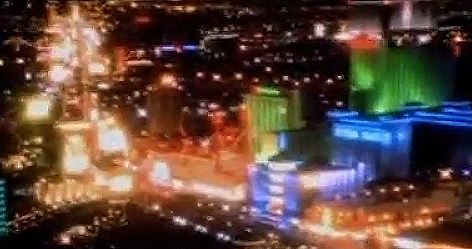
Camera DSLR Rigs for your Canon
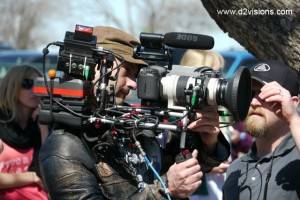 There’s a new gold rush. It’s filmmakers taking up the Canon DSLRs to shoot 35mm quality films.
There’s a new gold rush. It’s filmmakers taking up the Canon DSLRs to shoot 35mm quality films.
In the gold rush to Alaska, approximately 100,000 people rushed up to strike it rich between 1897 and 1899. Those who landed at Skagway encountered many merchants eager to sell them gear that they “must have” to insure their success. Few bothered to tell the prospectors that the real gold fields were another 550 miles away. Or that it would probably take 30 trips, carrying 65-pound packs on their back to transport enough supplies to last a year, which is what the Canadian authorities demanded. Skagway was full of conmen who would set up a telegraph office to send messages back home. The wires were strung out of town and stopped.
What does this have to do with camera rigs for the Canon DSLR?
Well, there are so many rigs invented and introduced that are perfect I think it’s Skagway all over again.
In our Canon Boot Camp we take the position that the shot should determine the mount you use. Not the other way around.
HAND-HELD SHOT - The shoulder mounted rig is just one option. It’s good for the hand-held look. There are many beautifully-built rigs…Redrock and Zacuto lead the pack in strength and quality. But only one rig really fills the bill if you have to hold the shot steady for longer than thirty seconds (that’s about how long a cameraperson can hold their breath.) It’s the MultiRig by DvTec. They have a rugged support pole descending from the main rig to a waistbelt which transfers the weight of the whole rig to your hips and your legs become your tripod legs so to speak. This liberates your hands. You can drink a Guinness with your left hand and still shoot smoothly, which is why we call it the “Guinness Cam.”
I shot with it for 5 days at the Edinburgh Fringe Festival. We shot the street theater and other events in the venue. ALL hand-held. ALL day long. Starting 9 am. to 2 a.m.
SMOOTH, TV COMMERCIAL PRODUCTION SHOT – The professional dolly (Fisher or others) really shines here, when you’ve got a stable scene with pro actors who’ll hit their marks as you move the camera on the smooth dolly. The downside is having to lay track. But on a stage the floor may be smooth enough. Otherwise you can use 1 by 12 inch boards if the move is short. But when we’re flying to a remote location and the budget’s tight we’ll just take a doorway dolly (using boards we buy at Home Depot for track) OR if the location is outside, we’ll rent a Chrysler Stow and Go. Your whole video production crew can ride to the shoot with the equipment. Then, you offload, stow the seats and set up your camera platform (speed rail or 2 by 12 with a C clamp and tripod head. This allows us to shoot out the side or the back tailgate. Let a little air out of the tires and it’s really pretty smooth. We used it shooting on the airstrip for a pilot training video.
In a pinch you can use a wheelchair. We found this very effective on the cruise line shoots we did. On land, almost any hotel has one you can borrow or rent for your shot.
LOW ANGLE (or tight quarters) – The CamCaddie rigs are great for these. Designed and manufactured by Daniel McElderry, so he could shoot skateboard films, it’s a rugged compact rig at a great price. The Alzo’s Transformer cage is tough, light and adaptable and low cost.
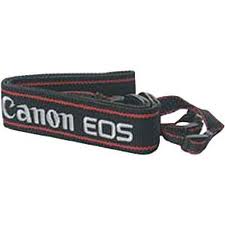 CHEAPEST & LIGHTEST & SMALLEST – This rig wins the day. It is for short moves and tight quarters. Maybe you’re the last person on earth to hear about it but it’s great. It’s the Canon cloth neckstrap that comes free with the camera. If you pull the strap tight around your neck and press outward, you’ll find you have a pretty steady shot. You can tilt up and pan. It’s good for short shots.
CHEAPEST & LIGHTEST & SMALLEST – This rig wins the day. It is for short moves and tight quarters. Maybe you’re the last person on earth to hear about it but it’s great. It’s the Canon cloth neckstrap that comes free with the camera. If you pull the strap tight around your neck and press outward, you’ll find you have a pretty steady shot. You can tilt up and pan. It’s good for short shots.
I didn’t begin to use it extensively until I was in a small plane trying to shoot. There was no room for a shoulder rig (I’m 6’7″) and it wouldn’t have worked anyway because planes (and cars) hit little bumps and the camera lifts on its own. So I slung the strap under my thigh and pulled up. Now I had 260 pounds of mass (my body) stabilizing the unexpected bumps from the plane. The shot came out smooth and controlled. On the subway loop the strap through the handgrips and pull down, then brace yourself against a vertical pole and you’re solid as a rock. I sometimes substitute a nylon strap with multiple loops in it (get it in a climbing shop) and carabiners running into heavy tie-wraps into the Canon DSLR body so I can quickly lengthen and shorten the attachment points.
STEADICAM – Of course, the Big Daddy is the Steadicam. This rig is out of most Canon DSLR filmmaker’s reach. And it’s actually too light for the rig. We have a policy of not commenting on rigs we haven’t tried. However, if you promise not to tell anybody, we had an old Steadicam Jr. we rigged to the Canon 5D Mark II and it works pretty well. It’s lighter than the Glidecam. Balancing is really easy because it has knobs to move the tray. You’ll probably want to get an arm brace to save your arm. Steadicam does have newer rigs but again, if we haven’t tried it personally we don’t comment.
The Gold Rush to Alaska was over in two years. The Gold Rush to use the Canon DSLR 7D, 5D Mark II and Mark III is still going strong. New gear is always appearing and we’re always willing to take a look but we suggest to mock up the shot first and then pick the rig to get the shot. Not the other way around. And if you’re not sure a rig will work, rent it and see. Then, invest in it. Too many filmmakers feel they have to buy first and then try it out. You can rent from EVS in Burbank. All the salespeople are actually camera operators and they can give you the straight story.
Canon 5D passes Green Screen Shoots with Flying Colors!
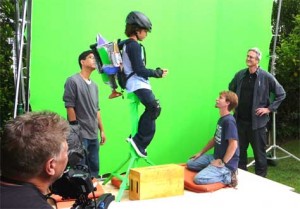
You might hear opinions that the Canon 5D’s 4.2.0 color space can’t deliver good keys for green screen. Well, here’s the word from the trenches. Something you can count on. The Canon 5D MarkII’s green screen shots keyed beautifully. (for more data on 4.2.0 color space got to bottom of this article*)
The Association did green screen tests prior to the shoot and they looked great. So, the client gave us the “green light”.
Green Screen shot with Canon 5D.
GREEN SCREEN LOOKING GOOD…
We shot the green screen on location. The sun was our light source. So we could shoot at ISO 100. White cards below and to the sides of the talent gave a nice edge. As we tell our students in our Canon Bootcamps, always triple save your shots. So, while we were backing up the shots onto two other hard drives, we checked to make sure the key was good (see below).
EVERY WEEK A NEW SHOOT…
We are shooting with the Canon 5D or 7D every week. Green screen, under water, on jibs, process trailers, motorcycles…and we’ve been nothing but pleased with the results.
THE “LOOK” of 35mm film for half the price…
Our clients love how the Canon maximizes their budget and gives them shots as pretty as 35mm film.
IT’S DIGITAL FILM…
We totally agree with Gale Tattersall (D.P. on “House, M.D.”) and Shane Hurlbutt (D.P. on “Terminator: Salvation” and his famous “The Last Three Minutes”) – the Canon DSLR delivers images that bring the excitement back to fine filmmaking. The Canon delivers rich blacks with no noise in low light conditions. It doesn’t do “video freak out” when a bright light source enters the frame. It has a delicious, short depth of field. Plus, editing is a snap. This camera’s a game changer.
YOUR CHOICE: Take our Canon Camera Classes OR Hire one of our trained Canon DSLR crews:
Either way, give us a call 818 841-9660.
It’s the future. It’s cool. And it’s here. Tested. Proven. Fantastic.
*….about 4.2.0 color space. The issue is dealt in depth in the blog <http://www.cinema5d.com/viewtopic.php?f=64&p=76648> , but the simple answer is “the workflow that works the best for us (for RedOne and 5D mark II footage) is to transcode the footage to ProRes 4.2.2. Of course we could do 4.4.4 but we decided that it was a bit overkill, considering the fact that at the end, it will be at best some mpeg4 from the local broadcasters (digital tv).”“The reason why we convert the 5D files to ProRes is the ability the ProRes has to not deteriorate with generations (renders, movies, etc). Also, when everything is native to the sequence setting, rendering is kept to a minimum. Everything that has to be rendered also (subtitles, texts, pictures, etc) all look better when working in a prores sequence compared when we tried in a sequence with the native clips from the 5D (h264).”
FILMMAKERS DREAM COMES TRUE – Tack Sharp Focus with a Tap of the Screen
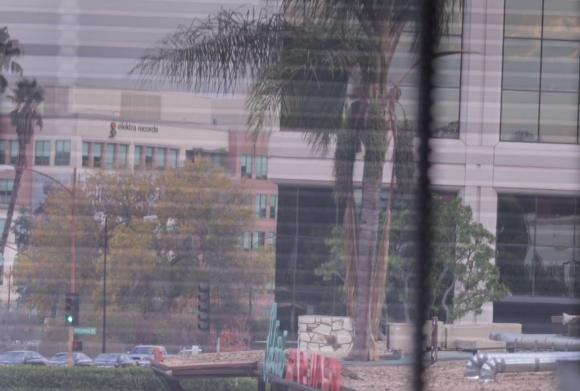
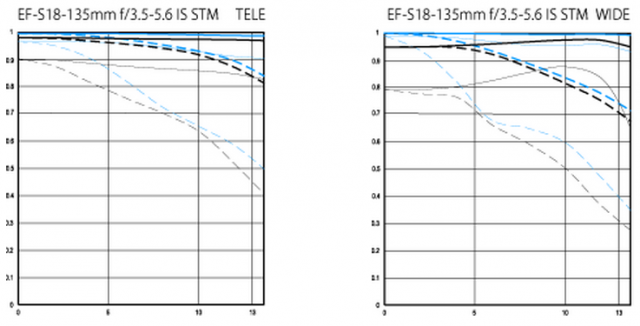



- See more at: http://blog.theassociation.tv/#sthash.pO8ZJd6I.dpuf

